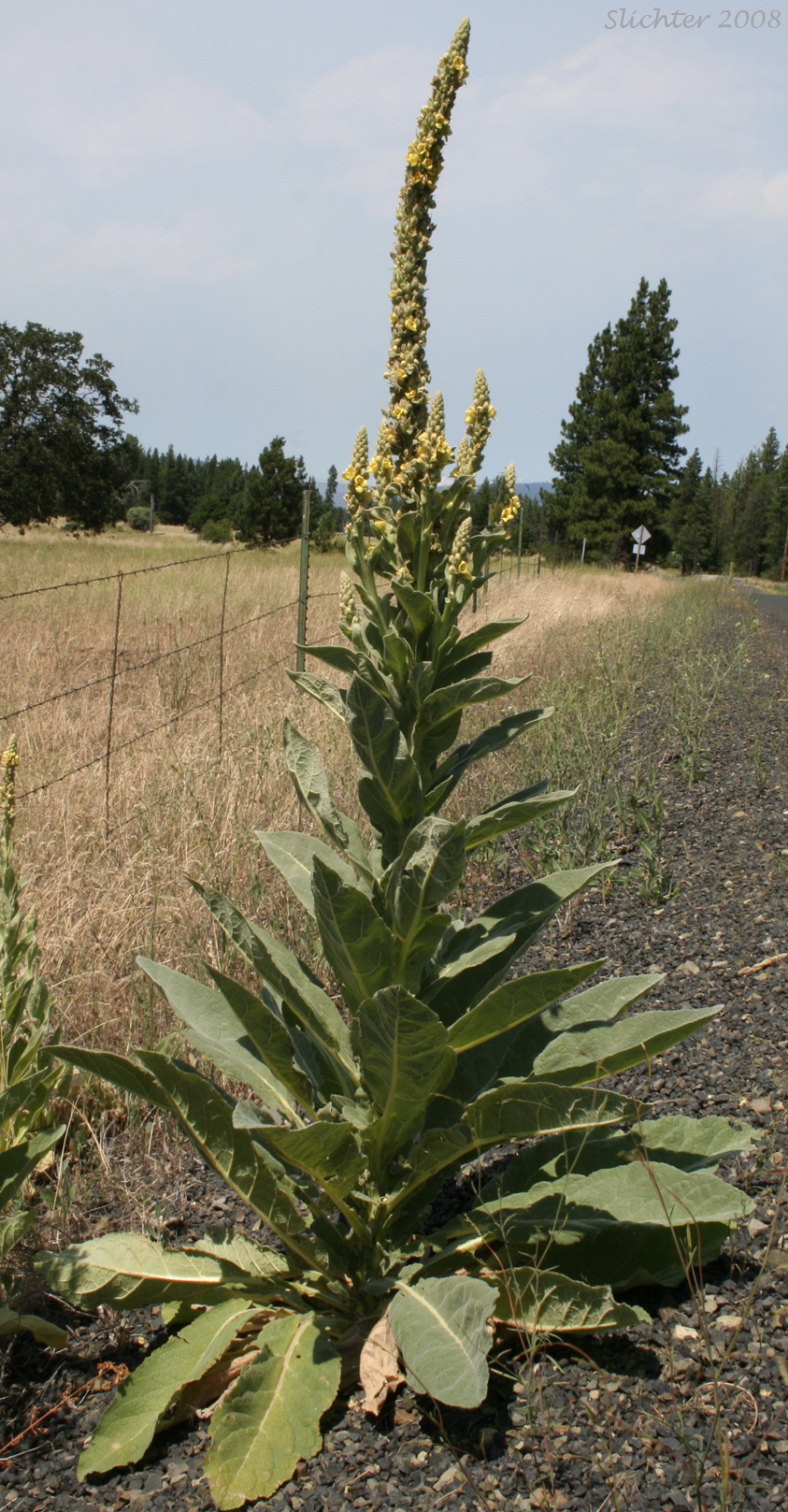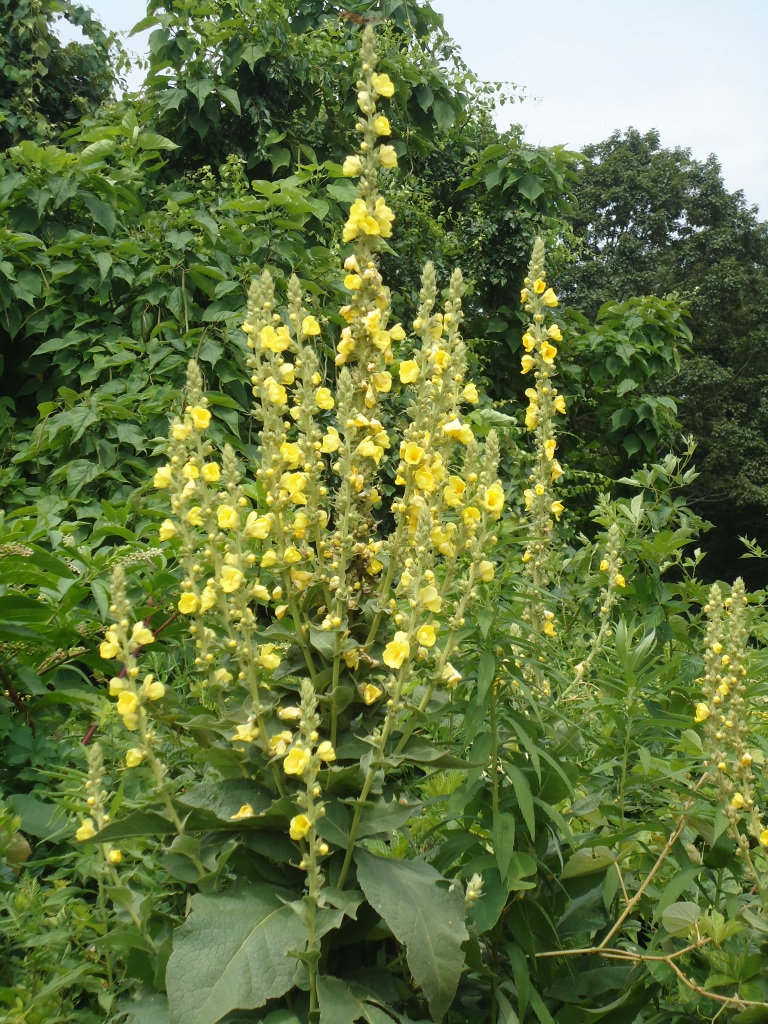
The plant bears also the name of Hedge Taper, and used to be called Torch, because the stalks were dipped in suet, and burnt for giving light at funerals and other gatherings. If worn under the feet day and night in the manner of a sock they bring down in young maidens their desired sicknesse." Gerard says "Figs do not putrifie at all that are wrapped in the leaves of Mullein. Fish will become stupefied by eating the seeds. The leaves and flowers contain mucilage, with a yellowish volatile oil, a fatty substance, and sugar, together with some colouring matter. In Queen Elizabeth's time they were carried about the person to prevent the falling sickness and distilled water from the flowers was said to be curative of gout. Mullein leaves have a weak, sleepy sort of smell, and rather a bitter taste. Quinlan, of Dublin, treated many cases of tubercular lung disease, even when some were far advanced in pulmonary consumption, with the Mullein, and with signal success as regards palliating the cough, staying the expectoration, and increasing the weight.

The taste of the decoction is bland, mucilaginous, and cordial. This is afterwards given warm to the patient twice a day, with or without sugar. The old Irish method of administering Mullein is to put an ounce of the dried leaves, or a corresponding quantity of the fresh ones, in a pint of milk, which is boiled for ten minutes, and then strained. The leaves are best when gathered in the late summer, just before the plant flowers. Constantly in Irish newspapers there are advertisements offering it for sale, and it can be had from all the leading local druggists. In most parts of Ireland, besides growing wild, it is carefully cultivated in gardens, because of a steady demand for the plant by sufferers from pulmonary consumption. The name "Molayne" is derived from the Latin, mollis, soft. It belongs to the scrofula-curing order of plants, having a thick stalk, from eighteen inches to four feet high, with large woolly mucilaginous leaves, and with a long flower-spike bearing plain yellow flowers, which are nearly sessile on the stem.

As its other name implies, mullein leaves were once used as toilet paper.The great Mullein ( Verbascum thapsus) grows freely in England on dry banks and waste places, but somewhat sparingly in Scotland. This covering is particularly thick on the leaves, giving them a silvery appearance. All parts of this plant are covered with star-shaped trichomes. Depending on the summer weather conditions, this wild edible may not produce a lot of flowers. The common name, mullein, comes from the German language, meaning king’s candle because of its scepter-like, candle-straight growth.

It is a common wild edible plant that spreads by prolifically producing seeds, but rarely becomes aggressively invasive, since its seed requires open ground to germinate.

The tall pole-like stem ends at a dense spike of yellow flowers. The second year plant normally produces a single unbranched stem. This dicotyledonous plant produces a rosette of leaves in its first year of growth. Mullein is a soft (almost velvet-like) biennial that can grow very tall. To support our efforts please browse our store (books with medicinal info, etc.).


 0 kommentar(er)
0 kommentar(er)
